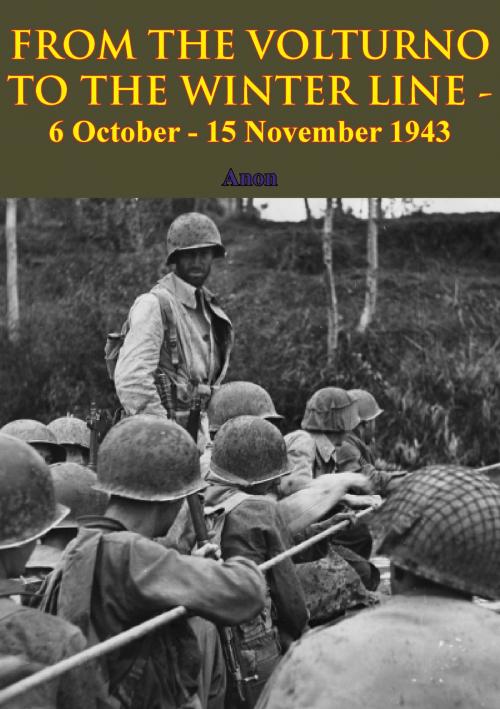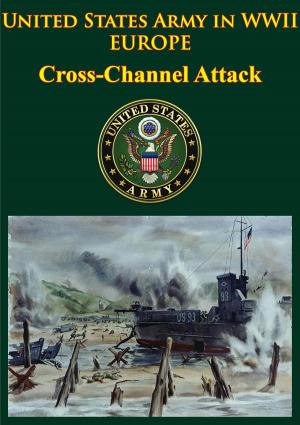From Volturno To The Winter Line
6 October - 15 November 1943 [Illustrated Edition]
Nonfiction, History, Germany, European General, Military, United States| Author: | Anon | ISBN: | 9781782894612 |
| Publisher: | Lucknow Books | Publication: | August 15, 2014 |
| Imprint: | Lucknow Books | Language: | English |
| Author: | Anon |
| ISBN: | 9781782894612 |
| Publisher: | Lucknow Books |
| Publication: | August 15, 2014 |
| Imprint: | Lucknow Books |
| Language: | English |
Illustrated with 30 maps and 36 Illustrations.
BEFORE DAWN ON THE MORNING OF 13 Oct. 1943, American and British assault troops of the Fifth Army waded the rain-swollen Volturno River in the face of withering fire from German riflemen and machine gunners dug in along the northern bank. This crossing of the Volturno opened the second phase of the Allied campaign in Italy. Five weeks earlier the Fifth Army had landed on the hostile beaches of the Gulf of Salerno. Now it was attacking a well-defended river line.
Along the Volturno the Germans had entrenched themselves in the first good defensive position north of Naples. Under pressure from the Fifth Army, commanded by Lt. Gen. Mark W. Clark, their rearguards had relinquished the great port of Naples with its surrounding airfields, providing us with the base necessary for large-scale operations west of the rugged Apennine mountain range, backbone of the Italian peninsula. East of the Apennines the British Eighth Army, under General Sir Bernard L. Montgomery, had reached the mouth of the Biferno River during the first week of Oct.. The Eighth and Fifth Armies now held a line across the peninsula running south from Torre Petacciato on the Adriatic Sea for some sixty-five miles, then west to a point on the Tyrrhenian Sea just south of the Volturno. Along this line of rivers and mountains the Germans clearly intended to make a stubborn stand, hoping to delay, perhaps to stop, our northward advance.
Within six weeks, Fifth Army troops had driven the Germans back to the Volturno, had executed a difficult river crossing in the face of a well-entrenched enemy, had gone on to cross the river a second and a third time, and had forced Kesselring’s hard-pressed army back into the chain of mountains which formed his next strong defensive position. Whether fighting across rivers, through valleys, or up steep mountain slopes, our men had everywhere proved their ability to defeat Hitler’s vaunted master race.
Illustrated with 30 maps and 36 Illustrations.
BEFORE DAWN ON THE MORNING OF 13 Oct. 1943, American and British assault troops of the Fifth Army waded the rain-swollen Volturno River in the face of withering fire from German riflemen and machine gunners dug in along the northern bank. This crossing of the Volturno opened the second phase of the Allied campaign in Italy. Five weeks earlier the Fifth Army had landed on the hostile beaches of the Gulf of Salerno. Now it was attacking a well-defended river line.
Along the Volturno the Germans had entrenched themselves in the first good defensive position north of Naples. Under pressure from the Fifth Army, commanded by Lt. Gen. Mark W. Clark, their rearguards had relinquished the great port of Naples with its surrounding airfields, providing us with the base necessary for large-scale operations west of the rugged Apennine mountain range, backbone of the Italian peninsula. East of the Apennines the British Eighth Army, under General Sir Bernard L. Montgomery, had reached the mouth of the Biferno River during the first week of Oct.. The Eighth and Fifth Armies now held a line across the peninsula running south from Torre Petacciato on the Adriatic Sea for some sixty-five miles, then west to a point on the Tyrrhenian Sea just south of the Volturno. Along this line of rivers and mountains the Germans clearly intended to make a stubborn stand, hoping to delay, perhaps to stop, our northward advance.
Within six weeks, Fifth Army troops had driven the Germans back to the Volturno, had executed a difficult river crossing in the face of a well-entrenched enemy, had gone on to cross the river a second and a third time, and had forced Kesselring’s hard-pressed army back into the chain of mountains which formed his next strong defensive position. Whether fighting across rivers, through valleys, or up steep mountain slopes, our men had everywhere proved their ability to defeat Hitler’s vaunted master race.

![Cover of the book Hunting The German Shark; The American Navy In The Underseas War [Illustrated Edition] by Anon](https://www.kuoky.com/images/2013/january/300x300/9781782891185-dSms_300x.jpg)





![Cover of the book On The Road To Kut, A Soldier’s Story Of The Mesopotamian Campaign [Illustrated Edition] by Anon](https://www.kuoky.com/images/2014/june/300x300/9781782891758-zjOL_300x.jpg)



![Cover of the book The Emma Gees [Illustrated Edition] by Anon](https://www.kuoky.com/images/2015/november/300x300/9781786255501-8RDw_300x.jpg)
![Cover of the book The Battle Of The Huertgen Forest [Illustrated Edition] by Anon](https://www.kuoky.com/images/2014/august/300x300/9781782898481-IEdU_300x.jpg)
![Cover of the book An Explorer In The Air Service [Illustrated Edition] by Anon](https://www.kuoky.com/images/2013/march/300x300/9781782890645-VZjn_300x.jpg)
![Cover of the book Official History of the Royal Air Force 1935-1945 — Vol. I —Fight at Odds [Illustrated Edition] by Anon](https://www.kuoky.com/images/2014/august/300x300/9781782893417-2YpY_300x.jpg)
